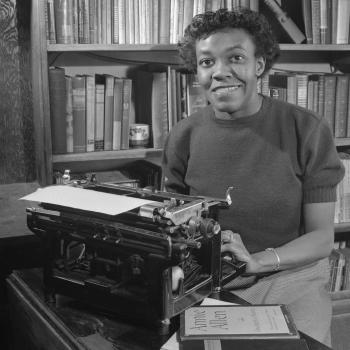
Best known for poems such as "The Mother," "The Bean Eaters," and "We Real Cool," Gwendolyn Brooks published Bronzeville Boys and Girls in 1956. Brooks dedicated the collection of 34 poems to her two children, Henry and Nora, who grew up in the same neighborhood on Chicago's South Side as the children in the book. A new edition of Bronzeville Boys and Girls features illustrations by Faith Ringgold.
Bronzeville Boys and Girls is a collection of poems that celebrates the joy and imagination of a community of children. Obtain a copy of the book and share several poems and illustrations with your students. Point out that some of the poems focus on a single child ("Narcissa," "DeKoven"); some on pairs of children ("Timmy and Tawanda"); and still others on children in specific situations ("Rudolph is Tired of the City," "Mirthine at the Party").
After students have read and discussed several poems from the collection, ask them to create a poetry anthology for their own family, neighborhood, or classroom. Students can use the Stapleless Book to create a collection themselves, or they can each contribute one poem to a class collection. Be sure to have students include illustrations to accompany the poems they compose.
This Academy of American Poets biography of Brooks includes links to five of her poems and an audio file of Brooks reading her famous "We Real Cool."
This site is a collection of web resources related to Brooks, who was the 29th Consultant in Poetry to the Library of Congress. Resources include links to interviews, audio files, criticism, and lesson plans.
On her official site you can find more work by and information about Faith Ringgold, the illustrator of the new edition of Bronzeville Boys and Girls.
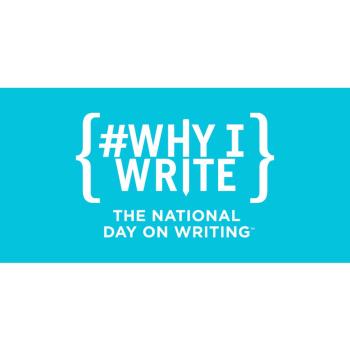
To draw attention to the remarkable variety of writing Americans engage in and to help make writers from all walks of life aware of their craft, the National Council of Teachers of English has established October 20 as the National Day on Writing®. It's important for everyone to share their knowledge about writing, organize participating groups in our schools and/or communities, and transform the public's understanding of writing and the role it plays in society today.
Encourage your students to uncover all of the different kinds of writing they do on a daily basis by asking them to keep a list of everything they write, from text messages to school assignments, e-mails to diary entries, in a single day.
After students make a list of everything they wrote in a day, help them see the variety in their writing, both individually and as a class. Post colorful chart paper with age-appropriate questions about purpose, audience, genre or type, and technology around the room. Ask students to brainstorm different categories for each poster based on the writing they did. Write these categories on the posters and then have students contribute examples from their personal lists. Facilitate a gallery walk of the posters once students have contributed to all of them.
Encourage students to view and reflect on all kinds of writing - no matter the purpose, audience, type, or technology.
Here you will find information about the National Day on Writing® initiative, as well as links to a variety of NCTE writing resources and tips for writing.
Keep these tips from NCTE in mind as you think about your writing.
This collection of position statements includes the "NCTE Beliefs about the Teaching of Writing" and "Writing Now: A Policy Research Brief."
This is the online home of the NWP, a professional development network with the mission of improving student achievement by improving the teaching of writing and improving learning in the nation's schools.
The Learning Network provides teaching and learning materials and ideas based on New York Times content.

Americans made history in 2008 by electing Barack Obama as the nation's first African-American President. In addition to his work as a community organizer and Senator, Obama also wrote two books, Dreams from My Father and The Audacity of Hope, before being elected President of the United States.
In his memoir Dreams from My Father, Obama describes an incident in which he, as a young boy, "came across the picture in Life magazine of the black man who had tried to peel off his skin" (51). Seeing the devastating effect negative messages about being African-American had on this man, Obama "began to notice that [Bill] Cosby never got the girl on I Spy, that the black man on Mission Impossible spent all his time underground. [He] noticed that there was nobody like [him] in the Sears, Roebuck Christmas catalog ... and that Santa was a white man" (52).
Share this passage expressing Obama's experiences with media messages and his understanding of his identity. Then encourage students to engage in an examination of the ways they are portrayed in the media. Point them toward print, online, and television portrayals of people who share their age bracket, race, gender, and any other relevant aspects of their identity.
Adapt activities from the lesson plans below to supplement their research and organize their findings.
Information and resources from the National Association for Media Literacy Education.
These resources promote media literacy education as a framework for accessing, analyzing, evaluating, creating, and participating with media content. Visitors will find readings, lesson plans, and samples of student-produced media.
This online article presents a summary of recommendations from a study that links young people's understanding of their identity to ways they are portrayed in the media. Included is a link to the full research report.
Nationally recognized as a leader in media literacy education, the Media Literacy Project provides resources that promote critical thinking and activism to build healthy and just communities. In addition to teaching and learning resources, visitors will also find information about media-based contests for students.

Prior to Google, Web search engines ranked search results according to the number of times a key word appeared on a page. Founders Larry Page and Sergey Brin revolutionized the Internet search process by ranking pages based on the number of other pages to which they are linked. Since incorporating in 1998, Google has grown in popularity as a preferred Internet search engine and information application provider. In 2006, the verb "google" was added to the Oxford English Dictionary.
Working with your librarian/school media specialist, engage students in an overview of developments in information/reference search technology. Guide students in an exploration of the following search tools (or others that provide a similar sense of contrast and development):
- card catalog
- Reader's Guide to Periodical Literature
- library Web site
- Google or other search engines
After students have had a chance to become familiar with the different search technologies, lead a discussion about the purposes, benefits, and disadvantages of each.
Encourage students to think beyond the notion that the newest technology is always the best. Remind them, for example, that information they find through an online search may not have the same credibility as something they might have found through the library card catalog. Or point out that while an online search engine may offer faster, more refined results, it may be keeping track of what you searched for without your full knowledge or permission.
Part of Google's official site, this timeline covers the company's lifespan from 1995 to the present, including thorough links to more recent developments in Google services. The timeline also lists the April Fool's Day jokes for which Google has become famous.
This frequently-updated blog includes information about new developments at Google, as well as innovative ways to use Google tools for work or leisure activities. Here you can also find links to other blogs about web technologies and blogs written by Google staff.
Offering an extensive history of search engines, this site puts Google in perspective as one of the industry leaders in the market. The site also includes an extensive list of links for further reading and exploration on the topic.

Novelist, poet, and screenwriter Sherman Alexie grew up on the Spokane Indian Reservation in Wellpinit, Washington. Often focusing on the connections between physical places and the stories that occur in them, Alexie wrote a semi-autobiographical young adult novel The Absolutely True Diary of a Part-time Indian with a protagonist who chooses to leave the school on his reservation to attend a nearby high school where he is the only Native American student.
In 2003, Sherman Alexie was asked to contribute to the "Finding Our Families, Finding Ourselves" exhibition, a project of The Museum of Tolerance. The collection consists of recreations of parts of participants' childhood homes or other significant family locations and showcases the diversity of Americans' personal histories. The scenes explore the meaning and inspiration behind the places and objects where memories and family history were made.
- Ask your class to imagine that they have been asked to participate in such an exhibit. Have students draw or take photos/video of their home or another significant location and then write or record reflections that explain why this location is important to their family history and their personal identity.
- Alternately, have students create an exhibit for a character from a short story, book, or play the class has read. They can use information in the text (and their imaginations), to help them create a representation of the rooms of a character's family home and explain how these rooms reflect the personal history and identity of the character.
Featuring information about Alexie's publications, this site also includes his blog, contests for readers, and a calendar of his appearances.
The official site for the Musuem of Tolerance exhibit includes images of some of the displays and resources for researching family history including tips for getting started and links to genealogy sites.
This collection of resources, a supplement to the NCTE book Sherman Alexie in the Classroom, offers ideas for teaching social justice and an introduction to Native American literatures, as well as critical excerpts about Alexie's work.
Alexie's entry on the Academy of American Poets site contains a biography and a link to his poem "Grief Calls Us to the Things of This World."
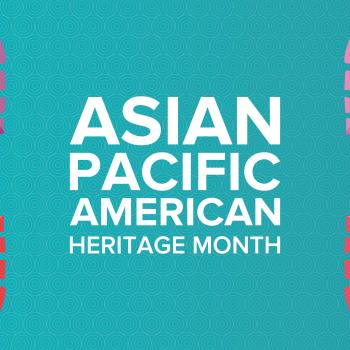
Since 1978, the month of May has been a time to honor the heritage of Asian and Pacific Americans and their contributions to the United States. Originally a week-long Asian American Heritage Week, the celebration now lasts through the entire month.
Ask students to consider the portrayal of Asians in popular culture by focusing on characters in films and movies. Have students explore images from classic and contemporary films and then compare these images to the historical and cultural reference materials.
- Read Asian Images in Film with students and analyze still images and movie trailers shared to identify how and when Asians are included in Hollywood films.
- Have students consider the shortcomings of Hollywood portrayals as well as those that are accurate.
- Ask students to find historical and cultural reference materials covering topics similar to those in the film clips. Have students compare the film portrayals to the information that they find in other texts.
This Library of Congress site features resources on Asian Pacific American history and culture, including links to biographies in the Veterans History Project, contemporary Japanese paintings, and resources for teachers.
The Smithsonian Education site includes materials on ethnic heritage, world music, history, and the arts. Visitors can learn about Hawaiian Lu'aus, Chinese immigrants' participation in the American Gold Rush, and the art of Buddhism. Educational materials and lesson plans are also provided.
This article from the Asia Society explores the history of Asian Americans and their role in shaping the country.
Find great books written about a wide range of Asian and Pacific American cultural experiences for children and adolescents.
Watch online interviews with Asian American children's book authors.
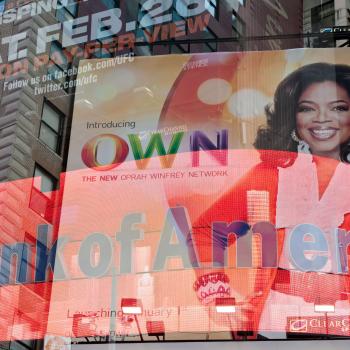
In September 1996, television personality Oprah Winfrey announced the first selection for her new book club, and her viewers responded by buying millions of copies of Jacquelyn Mitchard's The Deep End of the Ocean. Credited with starting a resurgence in the popularity of reading and book clubs, Winfrey went on to promote books by contemporary authors such as Toni Morrison, Ernest Gaines, and Barbara Kingsolver, as well as classic authors from Tolstoy to Faulkner.
Book clubs promote the social nature of reading and invite students to enjoy reading for its own sake. Even though individual readers might process text successfully in isolation, having the opportunity to discuss responses, share insights, and learn from the interpretations of other readers can be very valuable. Consider trying one of the activities below to get your own version of a book club started in your classroom.
- Within a classroom, have students form groups of three to five. Working with your librarian/school media specialist, have each group choose an appropriate book to read and discuss in place of an independent reading assignment.
- If you're feeling more ambitious, consider collaborating with colleagues on a larger book club model. Take the "One Grade, One Book" approach and have all students in a particular grade level read the same title. Discussion groups from different classes can share their responses at designated times. For middle school and secondary students, consider launching a "One School, One Book" intitiative and unite all the readers in your school around an appropriate title.
See the resources below for tips and suggestions on getting book clubs (large or small) started in your classroom or school.
This site provides questions that can help groups make basic decisions about what their group will do. Edit this site's list of questions to customize it for the specific needs of your students or group.
Older students can use these guidelines from Oprah’s website to organize their book clubs. The list includes sections on how to host, getting things started, discussion questions, and growing your club.
Here is a gathering all of Oprah's official book selections in one place, dating all the way back to 1996's inaugural book club pick.
Although this online article focuses on an adult audience at a library (not students at a school), it provides honest and practical advice for starting a larger-scale book club project.
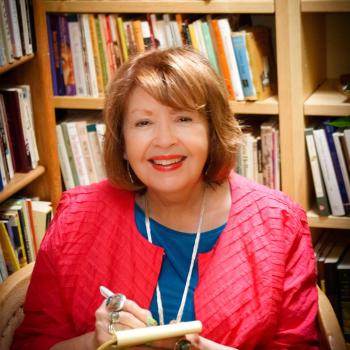
A poet and author equally skilled at writing for both youth and adult audiences, Pat Mora has written a number of children's books and collections of poetry. She is the founder of Día: El día de los niños/El día de los libros, Children's Day/Book Day, an initiative aimed at spreading what Mora calls "bookjoy" to all young readers. Mora is a champion of multilingual expression, as evidenced by many of her books and poems, including The Desert is My Mother/El Desierto Es Mi Madre.
- Begin this word association activity by arranging students in two groups. Ask one group to write down as many words as they can that relate to the word desert. Have the other group focus on the word mother.
- Have the groups share their lists, and ask students to look for words or phrases that show overlap between the concepts. Discuss their findings.
- Introduce Pat Mora's book The Desert is My Mother/El Desierto Es Mi Madre, and explain that the book is actually a poem that develops an extended metaphor. Stress that effective extended metaphors suggest several appropriate likenesses between two seemingly unlike things.
- As you read the story aloud, have students listen for ways that the narrator finds the desert similar to a mother. Have the class compare the words and images in the book to the lists they brainstormed earlier and discuss the surprising number of ways the desert can be considered like a mother.
- Share a few more extended metaphors, such as the poem "Fog" by Carl Sandburg or the Shakespearean speech "All the World's a Stage." Discuss how these texts exemplify the definition of extended metaphor.
- Ask students to write their own extended metaphor poems by asking them to choose a famliar concept (such as school, family, or friends) and think of a surprising comparison concept. Provide prewriting resources such as a two-column chart or a concept web to support students' writing process. Once they have written their poems, ask students to share their writing with the class.
Pat Mora's homepage includes lists of her publications as well as educator resources, activities for young readers, and a look at her future publications.
From the Academy of American Poets, this author page provides biographical information on Pat Mora.
The official ALSC site for El Día de Los Niños/El Día de Los Libros includes a state-by-state list of Día events, library programming ideas, a Día fact sheet, and downloadable Día brochures.
In this Reading Rockets interview, Pat Mora discusses her work and heritage, including her views on the need for more diverse voices in literature for children.

Toni Morrison, Nobel Laureate and Pulitzer Prize-winning author of fiction, nonfiction, drama, and poetry, was born in 1931 in Lorain, Ohio. Best known for her novels such as The Bluest Eye, Song of Solomon, and Beloved, she also published children's books based on Aesop's fables with her son Slade. Recurring motifs in her works for both young and adult readers included the reworking of myths, fables, and folk tales and the importance of personal and collective memory. She passed away in 2019.
Although most of Morrison's works are appropriate at the secondary level, students at any grade can be introduced to her style and language through her book Who's Got Game? Poppy or the Snake?, based on Aesop's fable "The Farmer and the Snake."
- Remind students of (or retell) "The Farmer and the Snake." Ask students to consider how the moral of the story relates to who is portrayed as the victim and who is the portrayed as the aggressor.
- Share with students Morrison's retelling of the fable. Ask students to pay attention to ways in which the retelling changes and expands on the original story (such as setting, character, dialogue, etc.). Use the ReadWriteThink interactive Story Map tool to facilitate this process.
- After reading the retelling, discuss students' observations. Ask students to compare the moral of the new story-now a tale about memory and paying attention-to the old one. How have the authors altered the resolution of the conflict-the snake is now a pair of boots that Poppy uses to remind him of the lesson-to shape that new moral?
- Consider sharing other such reworkings such as Christopher Myers' book Wings (which thoughtfully plays off the Icarus myth) before asking groups of students to adapt a myth, folk tale, or fable of their choosing to share with the class. Invite students to use the Story Map tool in their writing process.
The society, an official member of the Coalition of American Author Societies that make up the American Literature Association, has as its goal to "initiate, sponsor, and encourage critical dialogue, scholarly publications, conferences and projects devoted to the study of the life and works of Toni Morrison."
In 1993, the Nobel Foundation awarded its prize in Literature to Morrison, "who in novels characterized by visionary force and poetic import, gives life to an essential aspect of American reality." The site contains a biography, the text and sound recording of her Nobel lecture, and excerpts from her prose.
In this special edition of the Book Tour program on National Public Radio, Toni Morrison reads from her 2008 novel, A Mercy. The page also includes an interview with Morrison.
A collection of essays offering new and experienced teacher-scholars alternative ways to approach Toni Morrison's fiction and prose in the classroom, focusing on the history of racism and identity and cultural politics.
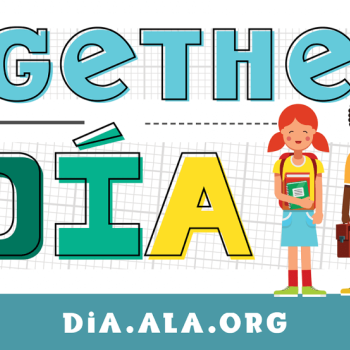
Developed under the leadership of author Pat Mora, El Día de Los Niños/El Día de Los Libros focuses on providing children with books in many languages and making reading an integral part of their lives. El Día de Los Niños/El Día de Los Libros is supported by the Association for Library Service to Children, a division of the American Library Association (ALA), and REFORMA, an ALA affiliate that provides library and information services to Latinos and the Spanish-speaking community.
Celebrate El Día de Los Niños/El Día de Los Libros by having students write and share their own multilingual stories:
- Read a book with parallel stories with the class, such as La Llorona: The Weeping Woman or The Day It Snowed Tortillas / El Dia Que Nevaron Tortillas, both by Joe Hayes. With students, examine the way that the books tell the story in two different languages.
- Arrange students in mixed multicultural groups and explain that together the groups will compose an illustrated, bilingual, or multilingual children's storybook to share with younger students.
- Return to the parallel stories read by the class to model how students will compose their own stories.
- Spend time exploring and creating the different parts that make up a professional book: title pages, acknowledgements, and dedications.
- Use the Book Cover Guide to discuss covers and dust jackets. Have students design these additional parts of the book.
- Students can use the Book Cover Creator to make the polished covers.
- Once the books are assembled, students can deliver them to their intended readers for a celebration of Día!
The official ALA site for El Día de Los Niños/El Día de Los Libros includes a state-by-state list of Día events, library programming ideas, a Día fact sheet, and downloadable Día brochures.
Pat Mora, founder of El Día de Los Niños/El Día de Los Libros, provides background and celebration suggestions on her personal website.
This Día-sponsored website features bilingual story time resources, a Spanish story time plan for preschoolers, and online resources for librarians working with Latino children. The site also includes guidelines and information on the Estela and Reforma Award, established to promote El Día de Los Niños/El Día de Los Libros.
This is the webpage for current winners of the American Library Association's Pura Belpré© Award, which is presented to a Latino/Latina writer and illustrator whose work best portrays, affirms, and celebrates the Latino cultural experience in an outstanding work of literature for children and youth.